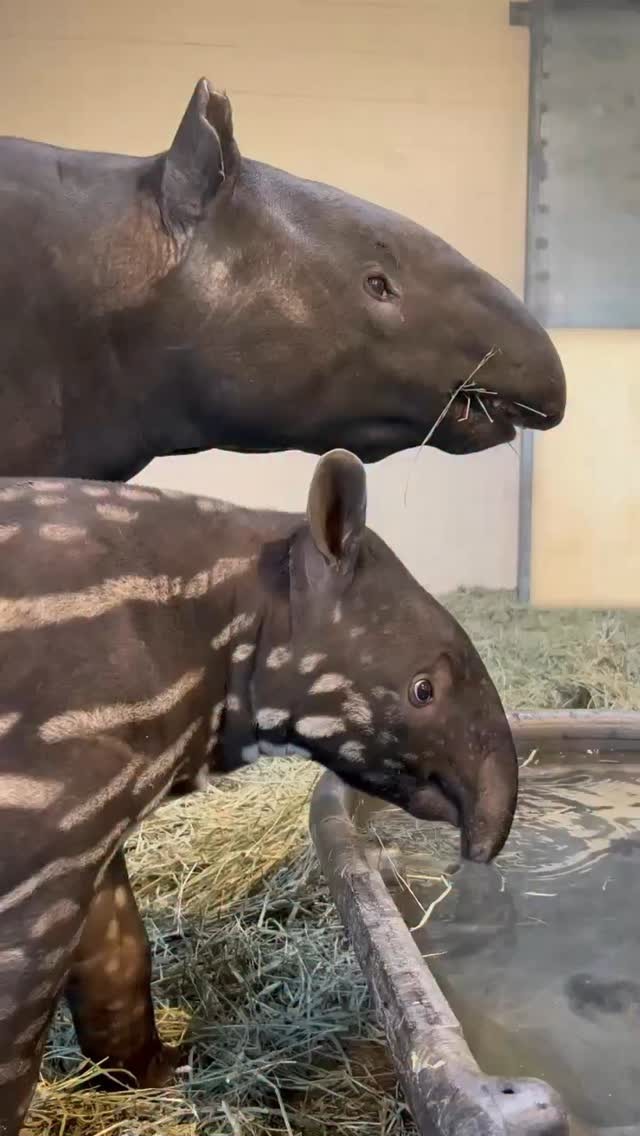- Overview of World Tapir Day and its significance in conservation efforts.
- Introduction to Ume the tapir calf, her growth milestones, and public viewing plans.
- The role of zoos in wildlife conservation and education.
- Tapir biology, behavior, and ecological importance.
- Challenges and solutions in tapir conservation.
World Tapir Day serves as an essential recognition of the significance of tapirs in global biodiversity. Celebrated on April 27th each year, it underscores the urgency in protecting these unique creatures, which are often overlooked amidst more prominent animals. The observance aims to raise public awareness about tapirs, their habitats, and the threats they face. It also promotes the efforts of conservation organizations working to ensure the survival of tapirs in the wild.
At the center of this commitment to tapir conservation is the story of Ume, a young tapir calf. Born just three months ago, Ume has reached a considerable weight of 141 pounds—an impressive feat reflecting her healthy growth. The anticipation of her public debut once she becomes confident in swimming adds excitement both for the zoo and its visitors. Keeper Katie, one of the dedicated staff members, has been closely monitoring Ume’s development, ensuring she receives the best care and socialization.
Zoos play a pivotal role in conserving wildlife and educating the public. They provide safe environments for endangered species like tapirs to thrive and reproduce, away from the immediate threats present in their natural habitats. This protective setting enables researchers to study tapirs closely, gathering data that informs conservation strategies in the wild. Educational programs conducted by zoos further augment public knowledge and foster an appreciation for these extraordinary animals.
Understanding tapir biology is crucial to appreciating their role in ecosystems. Tapirs are known for their distinctive long snouts and robust bodies, which are perfectly suited to their habitats in tropical forests. These herbivorous mammals play a critical role in seed dispersal, contributing to forest regeneration and health. Their solitary, primarily nocturnal behavior provides insight into their adaptability and survival strategies.
Tapirs face numerous challenges, chiefly habitat destruction and poaching. As forests are cleared for agriculture and urban development, tapirs lose critical habitat and resources. Conservationists work tirelessly to protect these habitats and establish protected areas to counteract these losses. Additionally, the illegal wildlife trade poses a threat, necessitating stringent measures to combat poaching and enforce wildlife protection laws.
Through collaborative efforts among zoos, conservation organizations, and governments, significant strides can be made in ensuring the survival of tapirs. Public engagement through events like World Tapir Day and showcasing young tapirs like Ume are vital components of these conservation efforts. By raising awareness and fostering a connection between the public and tapirs, there is hope for a future where these remarkable animals continue to flourish.
*****
Source Description
We couldn’t celebrate World Tapir Day without sharing an update on Ume! Our growing tapir calf will turn three months old this Friday and now weighs an impressive 141 pounds. Ume will be viewable to guests once she masters swimming safely. Stay tuned for more updates on her progress! 💗
📹: Keeper Katie


